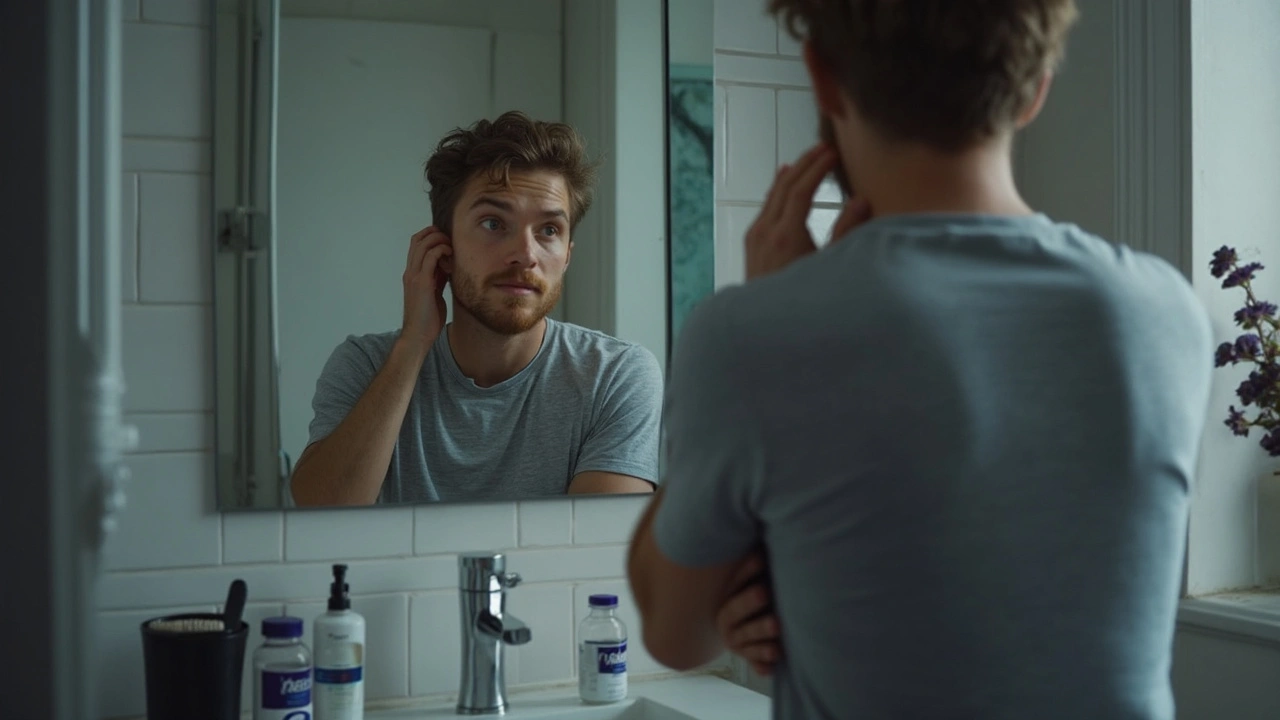June 2025 Archive — PhosLo and Rogaine: Practical Guides
This month we published two focused guides that many readers asked for: a straight-to-the-point guide on PhosLo for people managing high phosphate and kidney disease, and a clear, no-nonsense breakdown of Rogaine (topical minoxidil) for hair thinning. Both articles cut through marketing and give practical steps you can try or discuss with your clinician.
PhosLo: who should care and what to expect
PhosLo (calcium acetate) is a phosphate binder used when blood phosphate is high, most often in chronic kidney disease or people on dialysis. It works in the gut by binding dietary phosphate so your body absorbs less. The main takeaways: take it with meals, watch for constipation, and get your calcium and phosphate checked regularly. Diet matters — limit processed foods, cola, and high-phosphate snacks while using a binder. If you already take calcium supplements or have high blood calcium, talk to your nephrologist before starting PhosLo.
Practical tip: plan doses around your biggest meals. For many people, that means taking PhosLo with lunch and dinner rather than at breakfast only. If constipation becomes an issue, try fiber-first approaches and discuss mild laxatives with your care team rather than stopping the binder on your own.
Want details? Read the full PhosLo guide for side effects, dosing examples, and food lists: PhosLo: Uses, Side Effects, and Benefits for Kidney Health Explained.
Rogaine (minoxidil): what actually helps with hair regrowth
Rogaine is the brand many people know, but the active ingredient is minoxidil. It helps some people with androgenetic (pattern) hair loss by improving blood flow and prolonging the growth phase of hair follicles. Expect to use it every day and give it time — most people see changes around 3–6 months, with clearer results by 6–12 months. Stopping minoxidil usually reverses gains within months, so think of it as a long-term habit rather than a one-off fix.
Side effects are usually mild: scalp irritation, dry skin, or an initial shedding phase. Apply to a dry scalp, use the recommended dose, and avoid mixing with other topical products unless your dermatologist approves. If you have patchy or sudden hair loss, get checked first — minoxidil works best for gradual pattern thinning, not for all causes.
For step-by-step advice, product comparisons, and user tips, read the full Rogaine article here: Rogaine: The Real Story Behind Minoxidil, Hair Loss, and Regrowth.
If you want, I can suggest follow-ups based on your situation — for example, how to combine diet and meds for kidney health or how to pick the right strength and application routine for minoxidil. Tell me which topic you want more practical steps on and I’ll give you a short action plan.
PhosLo: Uses, Side Effects, and Benefits for Kidney Health Explained
Everything you need to know about PhosLo: how it works, who needs it, safety facts, food tips, and real advice for people managing kidney disease or high phosphate.
Rogaine: The Real Story Behind Minoxidil, Hair Loss, and Regrowth
If you're losing your hair or worried about thinning, you've probably heard about Rogaine. This article untangles the facts about minoxidil, goes behind the science, looks at real user tips, side effects, and directly tackles the myths. Forget marketing promises—here’s what actually works for regrowing hair and what to expect, with the honest details you never knew you needed.


